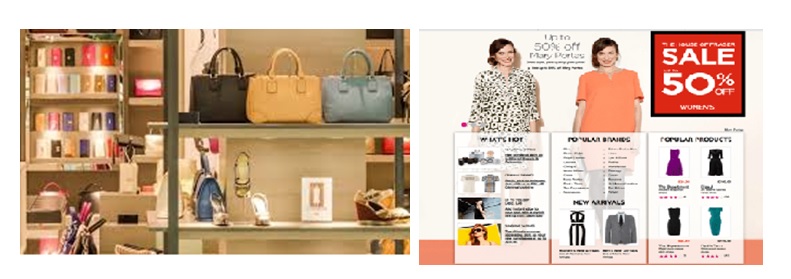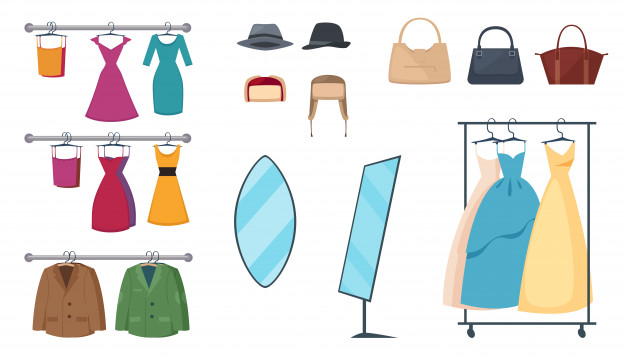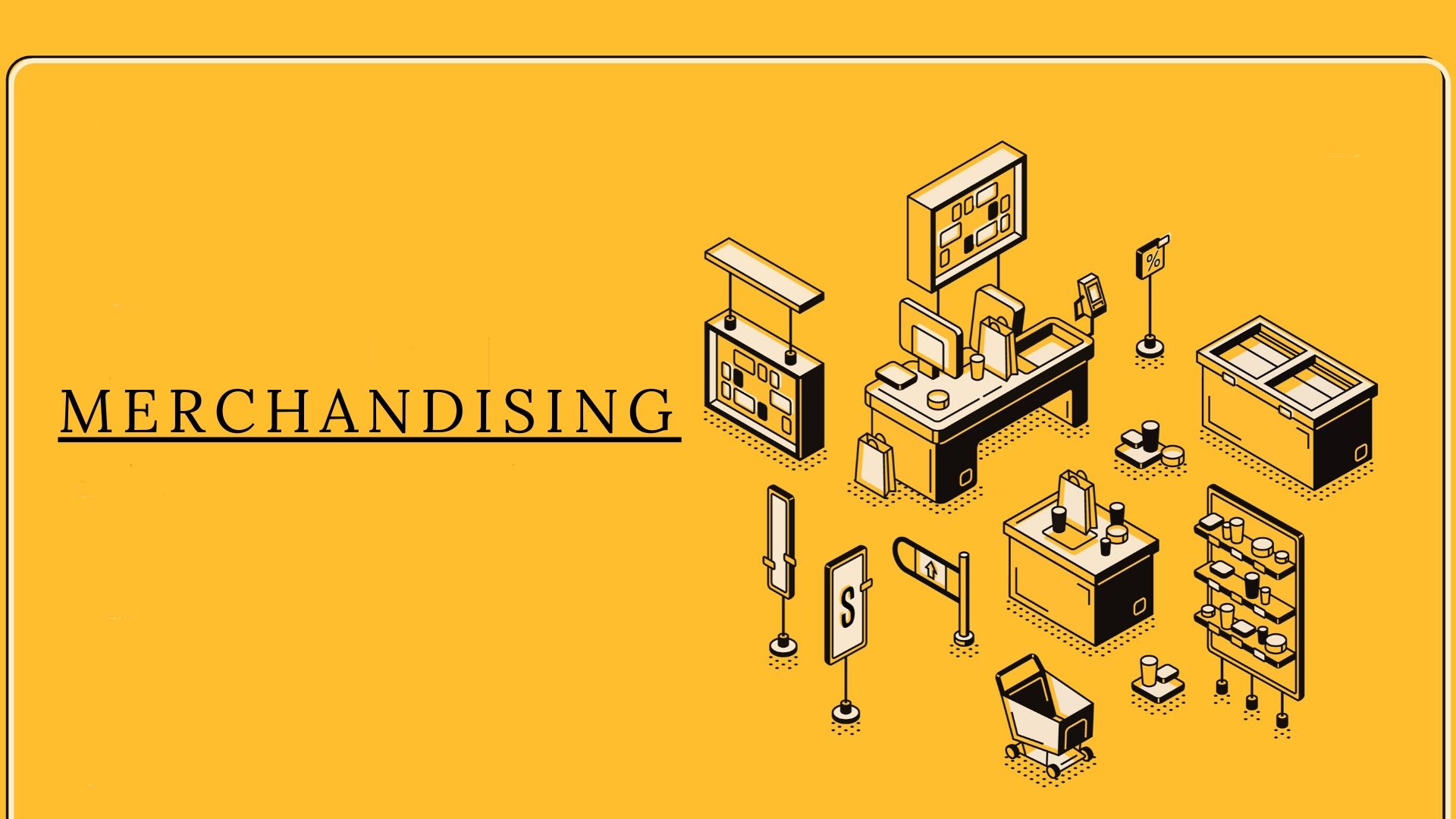Definition: Merchandising is the practice that contributes to product sales to a retail customer. For a retail store, merchandising denotes the activity to display products for sale in a way that interests customers to make a purchase.
The sales procedure is triggered by eyes, merchandising includes activities where the products are displayed in a favorable way that inspires purchases. Few ways to tempt buyers to make purchase includes:
- Displays – window and in-store
- Related products grouping
- Well-stocked shelves
- Signage for shelves
- Ads to feature merchandising
- Samples
- In-store product demonstration
Merchandising Benefits

- Increase in Sales – If merchandising is used effectively, its impact on sales would be good and leads to higher revenue generation. When the customer’s shopping experience improves by incorporating various techniques it eventually leads to an increase in sales.
- Gets more customers – Merchandising brings more customers to stores. Where there is more customer in the store, then it generates more sales. Hence, merchandising starts with your store entrance. When people see attractive things outside, they tend to enter stores.
- Good-looking Spaces – Having a proper display of the products on the shelves is very important. Customers should find it easy to identify the products they require. You should maintain an adequate place between the shelves to handle more traffic.
When you make use of proper merchandising, more customers come into your store and increase your brand value.
Types of Merchandising
There are many types of merchandise. The following lists them:
- Product Merchandising
- Retail Merchandising
- Visual Merchandising
- Digital Merchandising
- Omnichannel Merchandising
Let us discuss each one in detail.
1. Product Merchandising
This merchandising type contains various promotional activities that aim to sell a product. It could be either an online store or in-store products. It can also refer to either physical products or digital products. It refers to the following:
- Whether you merchandise watches in the store or online
- Whether you merchandise the hard copy book or e-books
In product merchandising, if it is an offline store it includes the promotional activities of the stores like proper display, signages, etc. If it is an online store it includes promotional activities online that includes the website design and all the optimization that goes with the website. Product merchandising for both offline and online stores is shown in Image 1.

2. Retail Merchandising
This merchandising type refers to the one in a physical store and includes the promotional happenings that contribute to the sale of products to a customer. It indicates the physical store, but the merchandising venues can be anything. It could be in a small outlet, events place, or in malls.
As the digital era is booming up, this term is being used more and it is used for digital merchandising also. Retail merchandising is shown in Image 2 where a customer gets help from the salesperson to purchase the product.

3. Visual Merchandising
This merchandising type indicates the display practices that provide an attractive look for the product and its benefits for being sold to the customers. It includes the following elements of the display to make it attractive.
- Space
- Lights
- Design
- Arrangement of products
- Easy way to take it
Visual merchandising type is applied for both offline and online merchandising. For offline retail, visual merchandising includes the following features:
- Floor plan layout
- Color selection
- Product and banner alignment
- Three-dimensional displays
For an online store, visual merchandising includes the following features.
- Web design
- Uses of images and videos to highlight the product features
Visual merchandising for both offline and online stores is shown in Image 3.

4. Digital Merchandising
This merchandising type consists of promotional activities to sell products online. This is commonly referred to as e-commerce or digital commerce or internet commerce. It involves the following activities:
- Website performance
- Digital product displays
- Digital marketing
- Email marketing, etc
This is a fully digital experience and the retail merchandising expands into digital. Retail and digital merchandising join hands so the digital experience is joined with the physical store experience.
5. Omnichannel Merchandising
This merchandising type denotes creating a combined customer experience for their journey across all touchpoints. For a retailer who manages both offline and online stores, omnichannel merchandising helps to create a whole customer experience, that is, when the customer transfers from offline to online and vice-e-versa.
Having discussed the merchandising types, let us see the merchandising techniques to put them in place.
The following points list the techniques
- First impression
- Lighting
- Traffic
- Metrics
- Science
Let us discuss each one of them.
1. First Impression
‘The first impression is the best impression’, this say goes well here as well. It is a critical factor be it for offline or online stores. For an offline store, display and the store should be attractive and for an online store, the look and the feel of the website design should be attractive.
For an offline store the following things to be kept in mind:
- Store location
- The entry of the store
- Product display
- Billing place
- Customer service, and so on
For an online store the following things to be kept in mind:
- Website design
- Page load speed
- Menu and sub-menus placed properly
- Search option
- Shopping Cart
- Payment Gateway, and so on
2. Lighting
Deploying light is an important feature for all merchandising Like the way, theatre production makes use of lights to project various scenes and attitudes, merchandising also uses light for product display, project any specific promotions.
The color usage has a significant role in the purchasing decisions and lighting here plays a major role to highlight a few color and trigger customers for certain directions. For example, the company Apple makes use of a clear white background for their computers. Whichever store you go, be it online or offline, it maintains the uniformity.
3. Traffic
All merchandising type with both offline and online store is inclined by traffic. It includes the following:
- Physical traffic where the customers visit the retail stores. This is inclined by floor plans, attractive banners, postures, etc.
- Digital traffic where the customers visit your webpages. This is inclined by social media, search engine optimization, and any other digital marketing strategies.
4. Metrics
Merchandising metrics and techniques should be in place and analyze which metrics and techniques should be put for practice. One popular metric is the sales per square foot metric. It regulates the ratio of the total floor and the display space of the shelves. A few other metrics are Cost of Acquiring new Customer (CAC), Revenue Per Visit (RPV).
5. Science
The major role to influence the merchandising technique is science as it finds out which techniques work for which areas. These kinds of retail challenges are performed with the various application of data science tools.
The real-time thought and focus to a potential customer requirement, also require the need for merchandising to make use of the new advances in data science. This would help them with customer behavior and buying patterns.
Conclusion
Like other domains, merchandising is a huge concept and undergoes a quick change. Hence, the right kind of merchandising brings you more traffic that would eventually lead to more sales.
Pinky is an MBA in Marketing from the University of Mumbai. She loves helping people out in learning Marketing and sharing latest ideas and tactics for growing businesses.
